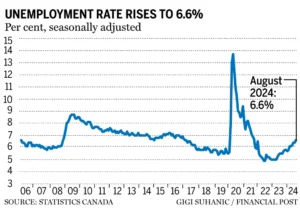In recent years, the importance of skilled trades in Canada has become increasingly evident. With the country facing labor shortages in various industries, the demand for qualified tradespeople is on the rise. To understand the current landscape and the challenges that come with it, we sat down with Todd Holowchak, a seasoned expert in workforce management and recently appointed Director of Hospitality Services at Wyrk, to discuss why investing in skilled trades is crucial for Canada’s future and what can be done to attract more individuals to this career path.
The Growing Demand for Skilled Trades
“Anyone pursuing skilled trades has a far greater chance and a much higher probability of landing a job than someone graduating with an academic degree through the student program,” Todd shared during our conversation. This statement is backed by data from institutions like BCIT, which boasts a staggering 98% placement rate for its skilled trades graduates. In contrast, many private universities and colleges struggle with a mere 15% placement rate, often leaving graduates underemployed and frustrated.
“The path to success, the path to meaningful employment, the path to secure, well-paying, good jobs is far higher in the skilled trades than it is in general studies on the academic side of things,” Todd emphasized. It’s clear that the opportunities in skilled trades are not only plentiful but also lucrative. Yet, despite this, many Canadians are still unaware of the potential that these careers offer.
According to the latest data, the wholesale and retail trade sectors have shed 127,000 jobs year-over-year, a decline of 4.2%. In July 2024 alone, these sectors lost 44,000 jobs, representing a 1.5% decrease. The finance, insurance, real estate, rental, and leasing sectors also saw a decrease, losing 15,000 jobs in the same month. Meanwhile, employment in skilled trades, particularly in industries like construction and maintenance, remains strong, offering more stable and lucrative opportunities.

The Role of TFW and LMIA in the Skilled Trades Shortage
One of the key issues contributing to the shortage of skilled tradespeople is the complex regulations surrounding the Temporary Foreign Worker (TFW) Program and the Labor Market Impact Assessment (LMIA). While these programs aim to fill gaps in the labor market, they are not without their challenges.
“The problem with these folks is they do their LMIA thing and everything, but they’re not as good at marketing and selling themselves. The blue-collar workers struggle with this, whereas the white-collar folks have mastered attracting international students or workers to come and live in Canada, whether there’s a job for them or not,” Todd explained.
This highlights a critical issue: many skilled trades positions remain unfilled because the people who could potentially fill them are not aware of the opportunities available or are deterred by the bureaucratic hurdles involved. Meanwhile, academic programs with less direct career paths continue to attract students, contributing to a mismatch in the labor market.
Breaking Down Barriers to Attract Talent
Todd believes that one of the most significant barriers to filling skilled trades roles is perception. “The problem is that the marketing and sales effort on the academic side is far superior to the skilled trades programs. There are more natural barriers in the immigration protocols plus entry into the Red Seal program, but if students are studying, there’s no reason why they shouldn’t be applying to BCIT or other polytechnic skilled trades programs,” he said.
For many potential workers, particularly those coming to Canada through TFW or seeking LMIA approval, the path to a stable and well-paying job in skilled trades seems daunting. However, with the right support and guidance, these individuals could be a crucial part of the solution to Canada’s labor shortage.

The Consequences of Underutilizing Skilled Trades
Failing to address this issue has severe consequences, not only for the economy but also for individuals who are left vulnerable to exploitation. “It’s super important to highlight that anyone pursuing skilled trades has a far greater chance and a much higher probability of landing a job,” Todd reiterated.
In a worst-case scenario, people desperate for work might fall prey to human trafficking or other exploitative practices simply to secure permanent residency in Canada. This is particularly concerning for those who are misled by the promise of academic degrees without clear job prospects, while skilled trades continue to be under-marketed and undervalued.
Current Employment Trends and the Need for Skilled Trades
The employment landscape across various industries in Canada has been mixed. While some sectors have shown growth, others have experienced significant declines. For instance, public administration employment rose by 20,000 jobs in July, contributing to a year-over-year increase of 205,000 jobs, or 4.8%, in the public sector. Similarly, the transportation and warehousing sectors added 15,000 jobs in July, partially offsetting declines earlier in the year.
These gains, however, do not extend to all areas. The declines in wholesale and retail trade, as well as in finance and real estate sectors, highlight the volatility and uncertainty faced by many Canadian workers. In contrast, skilled trades continue to offer stable, high-paying employment opportunities that are less susceptible to the fluctuations seen in other industries.
Why Skilled Trades Are the Future
As Todd eloquently put it, “When you look at the stats at BCIT in terms of their skilled trades, they have like a 98% placement rate in people in their study. It’s ridiculous. These private universities and colleges, what have they got? A 15% placement rate, and if anyone does get a job, it’s unlikely in their chosen career—they’re flipping burgers at McDonald’s.”
The solution is clear: companies, educational institutions, and policymakers need to come together to promote skilled trades as a viable and desirable career path. By breaking down the barriers to entry and improving marketing efforts, Canada can attract more individuals to these essential roles.
Government Efforts to Support Skilled Trades
In response to the evolving employment landscape, the Government of Canada has taken significant steps to bolster the skilled trades workforce, particularly in sectors experiencing growth and high demand. Recognizing the critical role skilled tradespeople play in addressing the housing crisis and contributing to economic stability, the government is investing heavily to attract more individuals to these professions.

On August 16, 2024, the Government of Canada announced an investment of over $13.6 million for five projects in the Greater Toronto Area under the Canadian Apprenticeship Strategy’s Union Training and Innovation Program (UTIP). This funding is part of a larger commitment of $74.6 million across 124 projects, aiming to recruit, train, and retain more apprentices in skilled trades, with a particular focus on young people, women, newcomers, and other equity-deserving groups.
Through UTIP, the government supports unions and training providers by enhancing the quality of training with new equipment and technology, and by offering mentorship and job-matching services. This initiative is part of a broader strategy to build a robust, inclusive, and future-ready skilled trades workforce. Since the program’s inception in 2017, nearly $305 million has been invested, underlining the government’s dedication to addressing barriers to entry in the skilled trades and supporting the nation’s economic growth.
Moreover, the Government of Canada continues to provide substantial financial support to apprentices through Employment Insurance benefits during technical training, Canada Apprentice Loans of up to $20,000, and Apprenticeship Grants of up to $4,000. This comprehensive approach ensures that apprentices have the resources they need to succeed and that Canada’s skilled trades sector remains competitive and well-equipped to meet future challenges.
A Call to Action
The demand for skilled tradesmen is on the rise, and there’s never been a better time to invest in this sector. It’s not just about building structures but building a future with in-demand skills that can take you anywhere. For businesses, this means investing in better marketing and outreach to showcase the benefits of these careers. For individuals, it means considering a path that promises stability, good pay, and meaningful work.
Skilled trades offer far superior opportunities for those looking to build a better future. It’s time we recognize the value of these careers and make them accessible to everyone, ensuring that no one has to face unemployment or exploitation simply to achieve their dreams.










